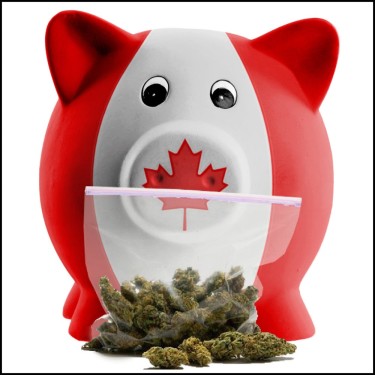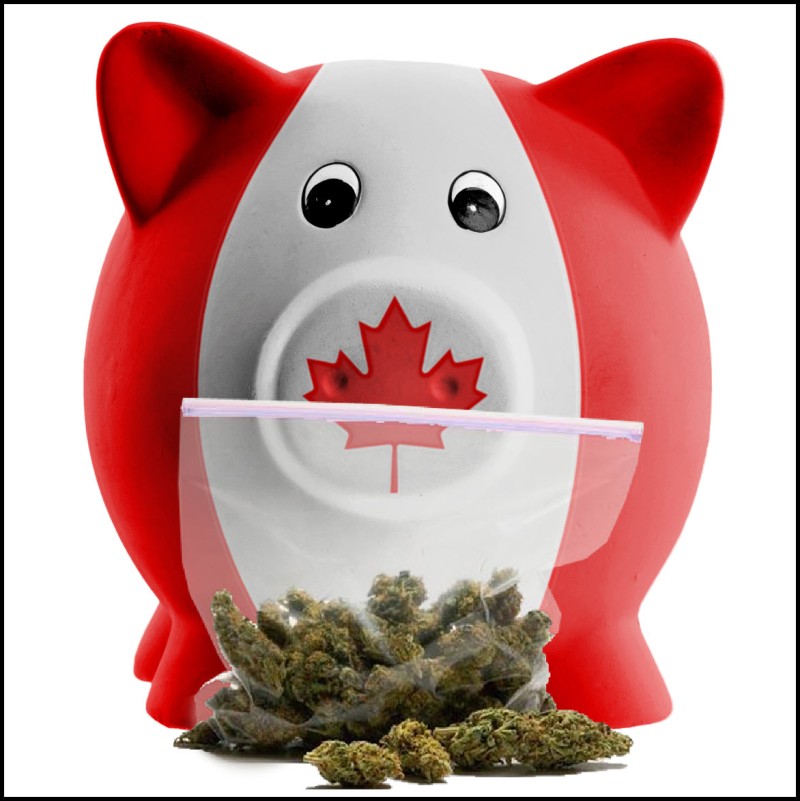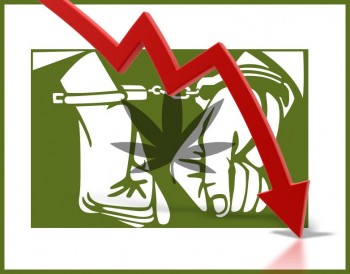
Since recreational use of cannabis became legal in Canada in 2018, the federal government of that country has imposed a total duty on cannabis products of over 1 billion Canadian dollars ($740 million). Executives expect that the government would ease the tax and excise regime it imposes on the sector as employment and financial losses rise as the milestone is reached.
Around CA$862.3 million in total duty on cannabis products was levied by the federal government between the 2018–19 and 2020–21 fiscal years, the majority of which was distributed to the provinces and territories, according to the Canada Revenue Agency (CRA).
Similar data for the 2021–22 fiscal year has not yet been released by the CRA.
However, the most current official accounts, which outline the government's costs and income, reveal that the federal government received revenue from the cannabis levy worth 160.2 million Canadian dollars that year, bringing the total duty since 2018 to at least 1.02 billion Canadian dollars.
SMASHING $1 BILLION MARK
Since the public accounts figure for 2021–22 excludes, among other things, duty that the federal government collects and distributes to the provinces and territories, the total duty since 2018 is probably substantially higher.
For previous fiscal years, the CRA assessed the following total duty on cannabis:
$514 million Canadian dollars in 2020–21.
$256.7 million Canadian dollars in 2019–20.
$91.6 million Canadian dollars in 2018–19.
The figures include additional duty that is only applicable in some jurisdictions as well as additional duty that is assessed by the federal government and distributed to the provinces and territories.
Since sales have risen from 2018, the federal government's overall duty assessed on cannabis items has increased.
The cannabis tax's own earnings for the federal government were as follows:
For the years 2021–2022, 160.2 million Canadian dollars.
$108,9 million Canadian dollars in 2020–21.
in 2019–20, $52 million Canadian dollars.
$ 18.3 million Canadian dollars in 2018–19.
The revenue service identified the amount of the "extra" cannabis duty and a "adjustment" to that increased duty as CA$403.3 million of the CA$514 million in assessments made by the CRA for the 2020–21 fiscal year.
The CRA explained the "additional" duty as the cannabis excise duty that the federal government agreed to split with the territories and provinces from recreational marijuana sales in their respective areas in an email to MJBizDaily.
In exchange for sharing 75% of the money it earns while keeping 25% for itself, the federal government agreed.
The excise tax levied by Canada on dried cannabis produced by producers is CA$1 per gram or 10% of the gram's price, whichever is higher.
In some places, there is an additional excise tax on top of the federal tax. These sums are referred to as a "adjustment" to the increased cannabis duty by the CRA.
According to the agency, all funds gathered under this fictitious adjustment are given back to the relevant province or territory.
The distinction between the "extra" duty and the "adjustment" to the additional cannabis duty is not made in the CRA tables.
When provincial and federal taxes are included, it is estimated that the sale of cannabis to governments in Canada brought in CA$1.6 billion in the fiscal year 2021–2022.
Included in that revenue are:
Province-owned alcohol and marijuana regulatory bodies reported net income of CA$300 million.
"Total taxes" and other sources of income brought in CA$1.3 billion.
What's included in the CA$1.3 billion?
A federal excise tax of CA$200 million.
From additional provincial or territorial revenue sources including provincial excise taxes, CA$600 million.
retail sales taxes of CA $500 million.
MAJORITY OF DUTY FROM FLOWER
The majority of the duty imposed by the federal government was on dried/fresh cannabis, when broken down by product category.
Duty imposed on dried or fresh cannabis made up 79.2% of the total for the fiscal years over the period 2018–21.
A total of 16.5% of the charge was made up of cannabis extracts, including oil.
The conclusion of the 2019–20 fiscal year saw the nationwide rollout of cannabis edibles, but the duty rate did not begin to increase significantly until then.
From CA$1.2 million in 2019–20 to almost CA$6.5 million in 2020–21, the total duty assessed on edibles increased.
Duty imposed on topical cannabis products totaled CA$973,000 in the fiscal year 2020–21.
The CRA did not reveal the duty paid on cannabis plants and seeds in the aforementioned year due to "confidentiality reasons."
Nonetheless, the amount did not go over CA$436,000.
IMPACT OF HIGH CANNABIS TAXES ON THE CANADIAN INDUSTRY AND CONSUMERS
The Canadian government's high cannabis taxes have been a substantial source of income for the nation, but they have also had a big effect on the cannabis market and users. Legal cannabis is frequently far more expensive than illegal cannabis because to the hefty taxes, making it difficult for enterprises to compete with the dark market. As a result, despite the fact that cannabis is now legal for recreational use, many Canadians continue to buy it from unreliable vendors.
Some people have found it difficult to afford legal cannabis as a result of the hefty taxes placed on cannabis goods, which have also increased consumer prices. Because they cannot afford to buy legal cannabis at the current costs, people who depend on cannabis for medical purposes are frequently driven to buy from sources that are illegal.
Many industry participants have demanded a reduction in cannabis taxes or at the very least a reorganization of the current tax structure in response to these problems. Some have argued that a lower tax rate would make it simpler for legitimate enterprises to compete with the black market and would, eventually, result in more money for the government. Others have recommended that cannabis tax money be used to fund educational and harm reduction initiatives to help combat drug use's negative consequences.
BOTTOM LINE
Since cannabis was legalized in Canada in 2018, the government has levied over $1 billion CAD in taxes and customs, but the hefty taxes have made legal cannabis more expensive than the illegal market, which has an effect on the sector and consumers. Due to the financial damages brought on by the epidemic, the government may think about lowering the tax code.






